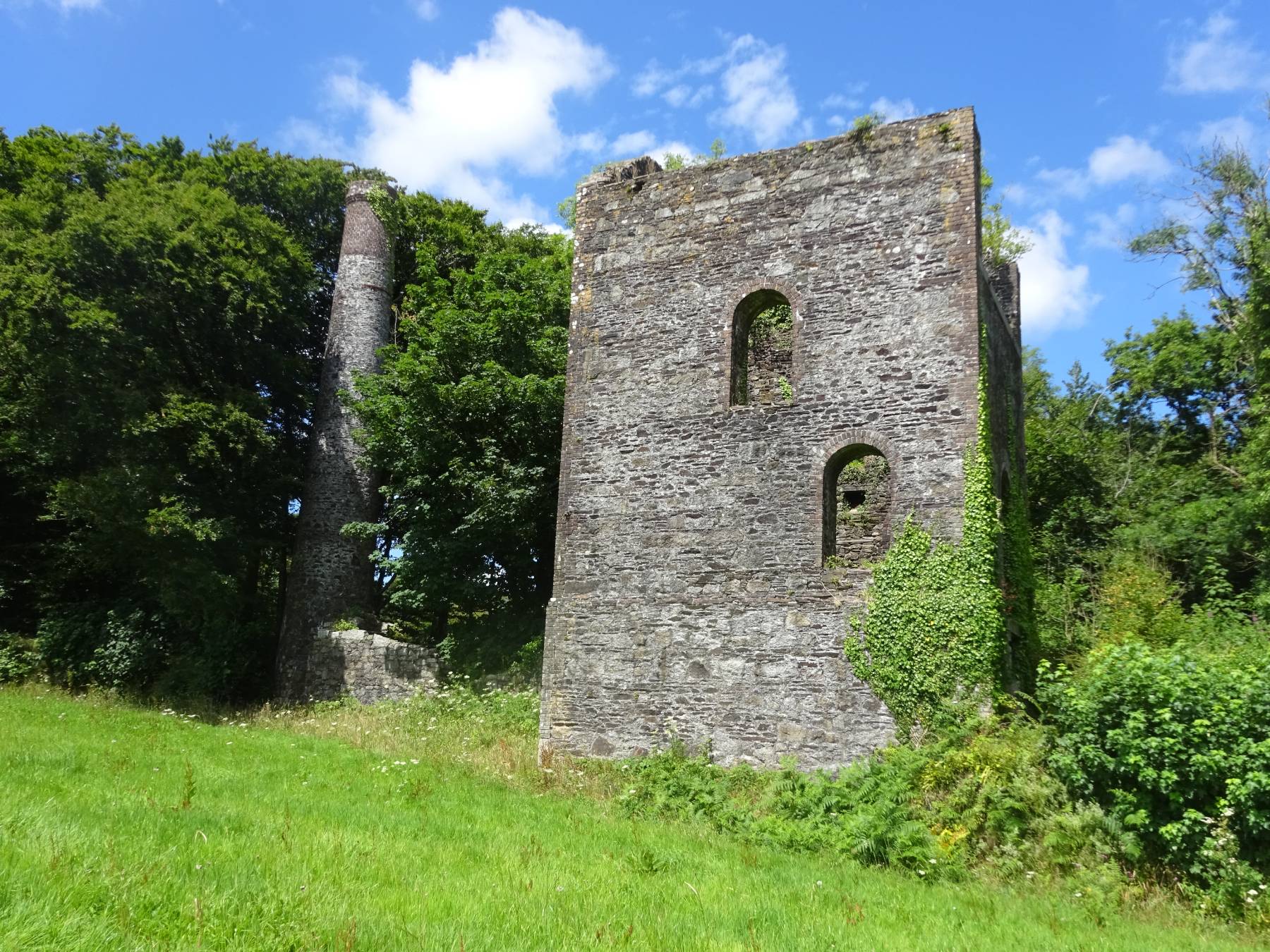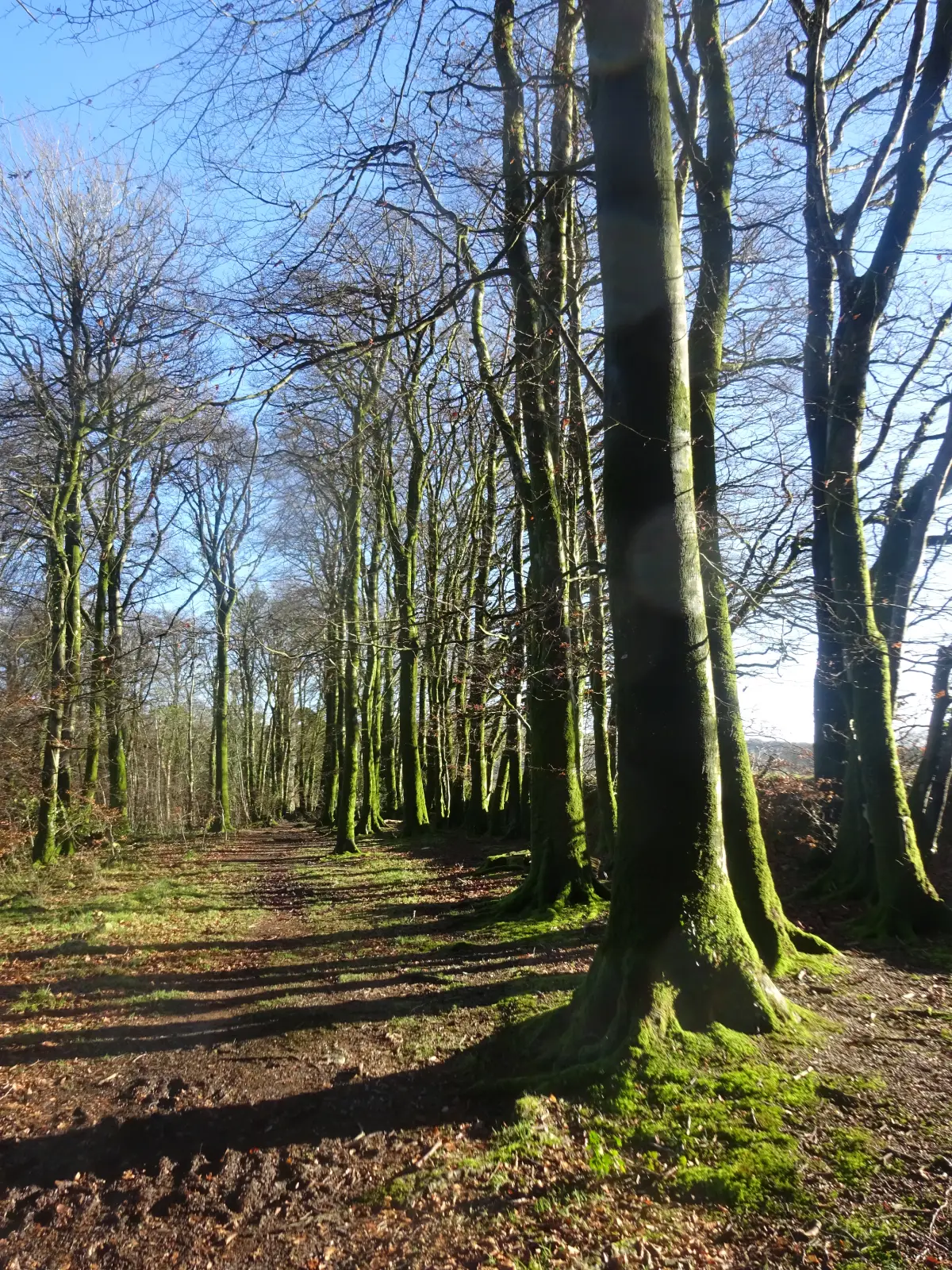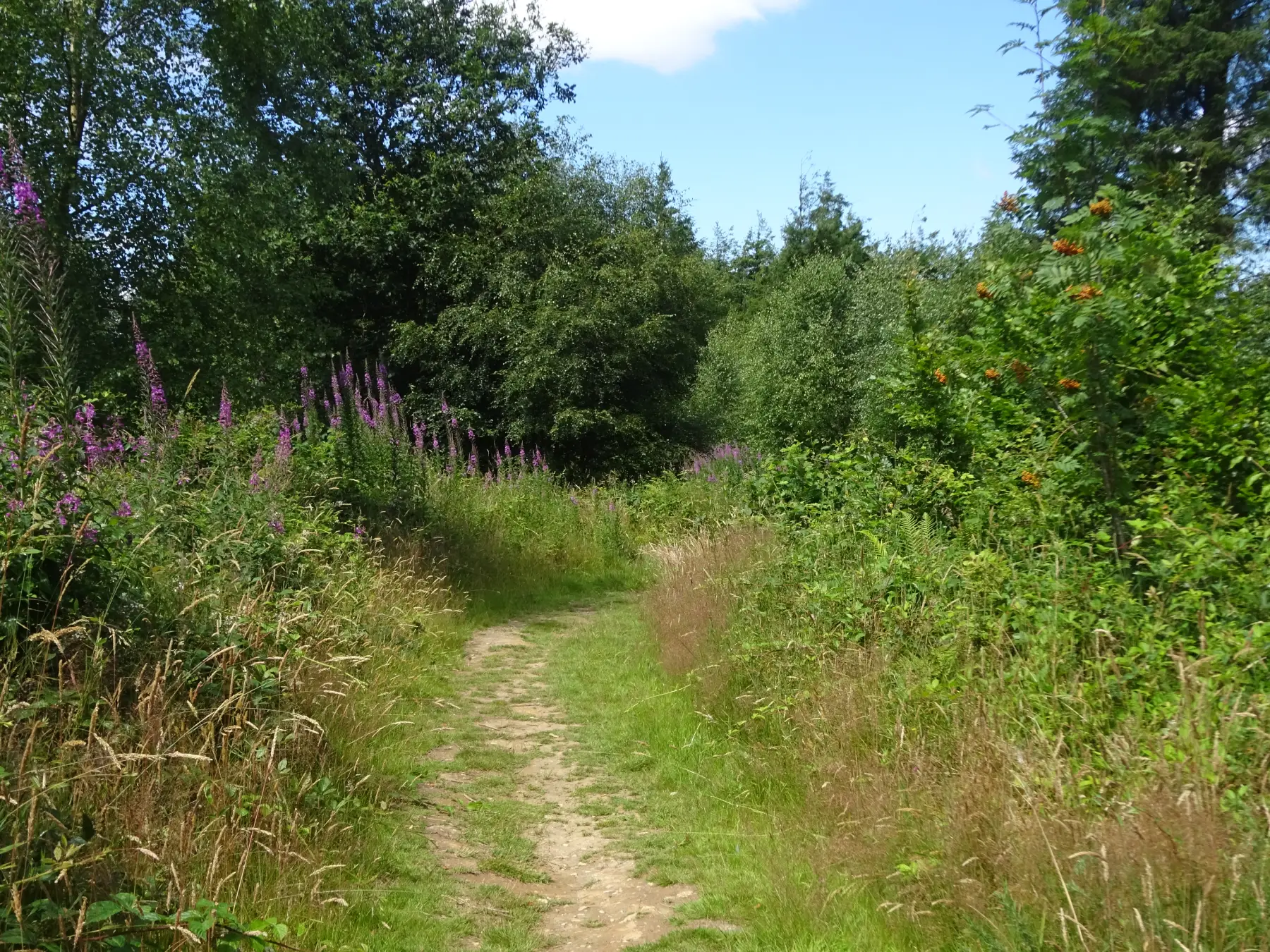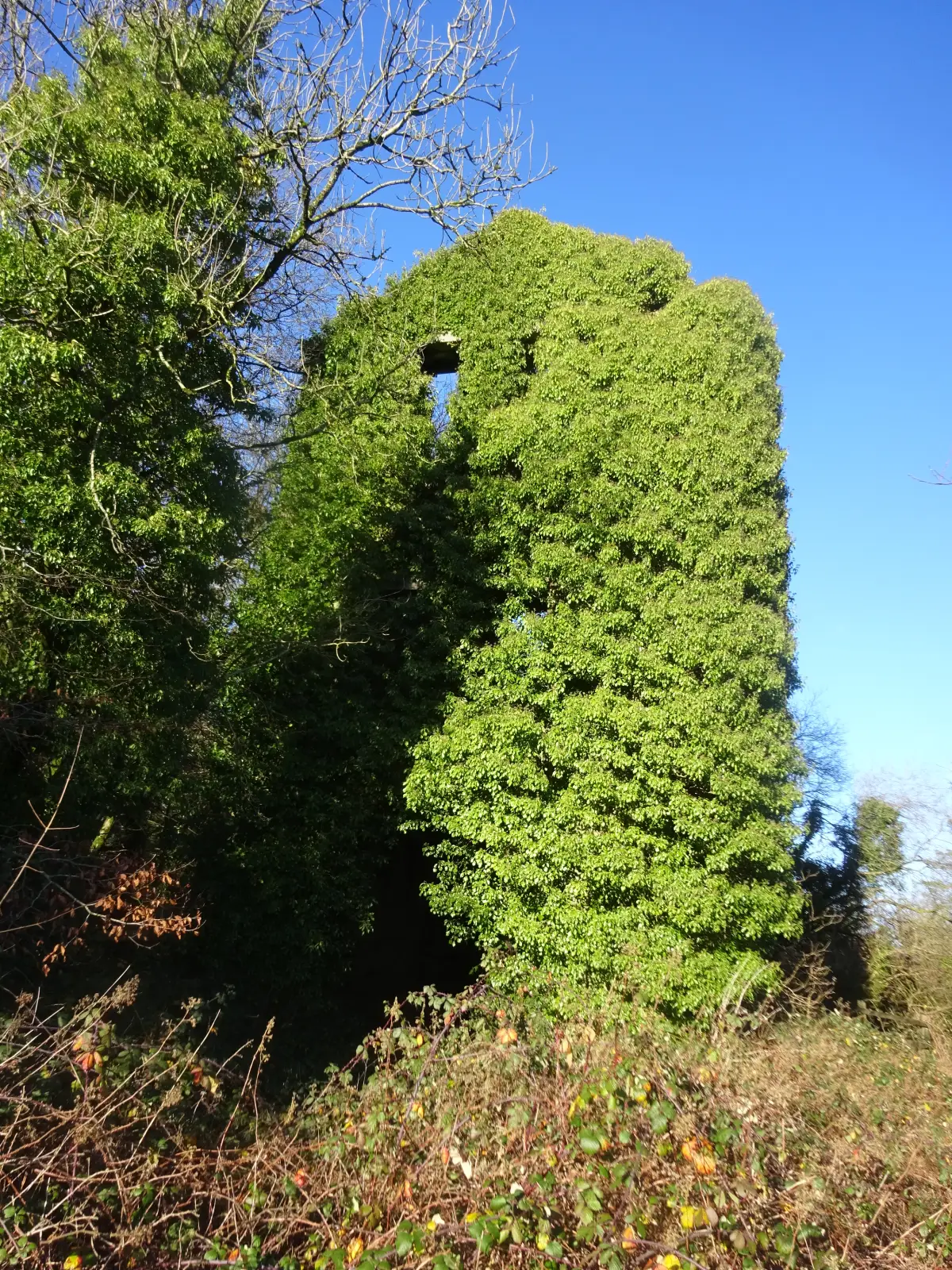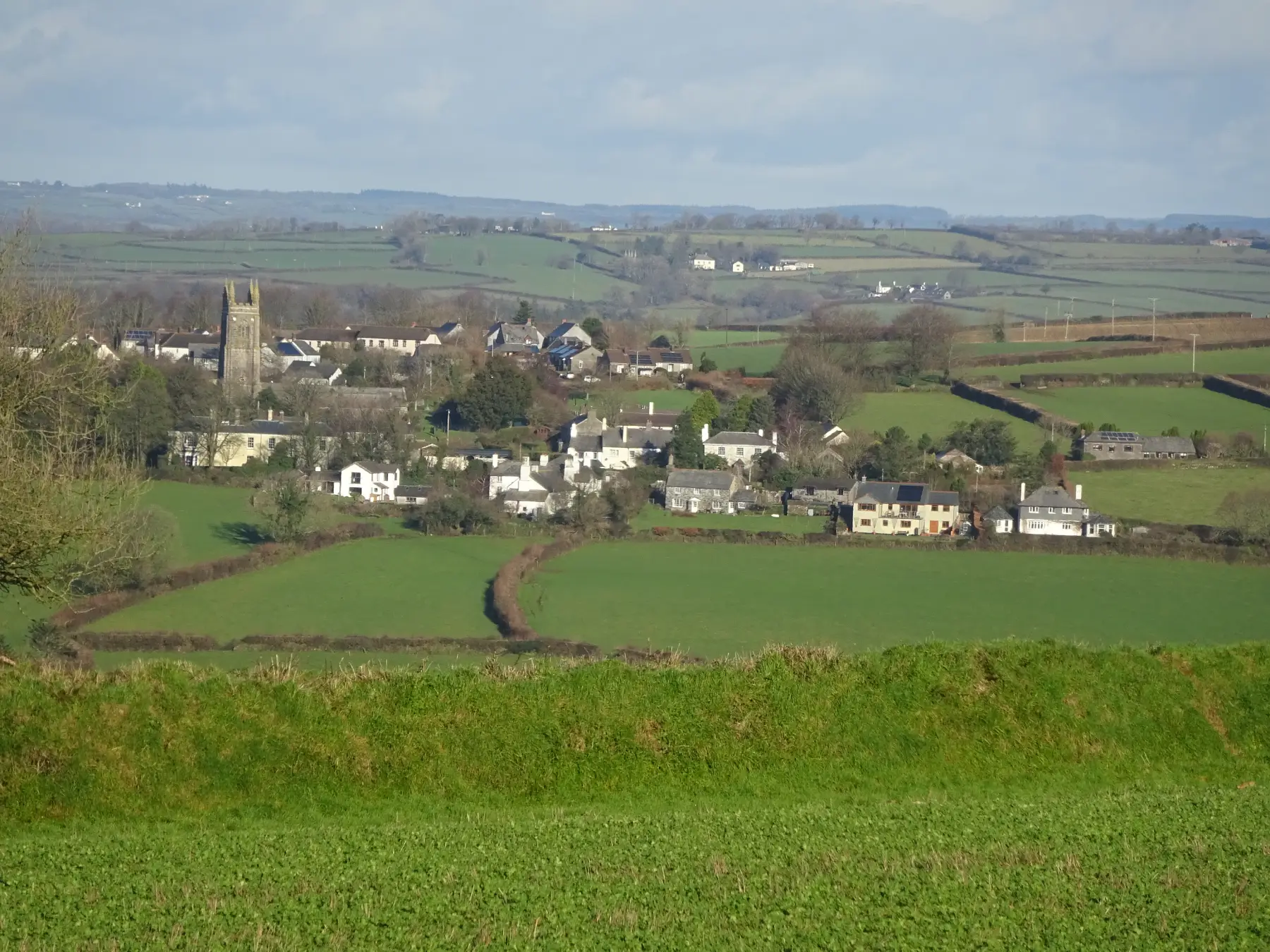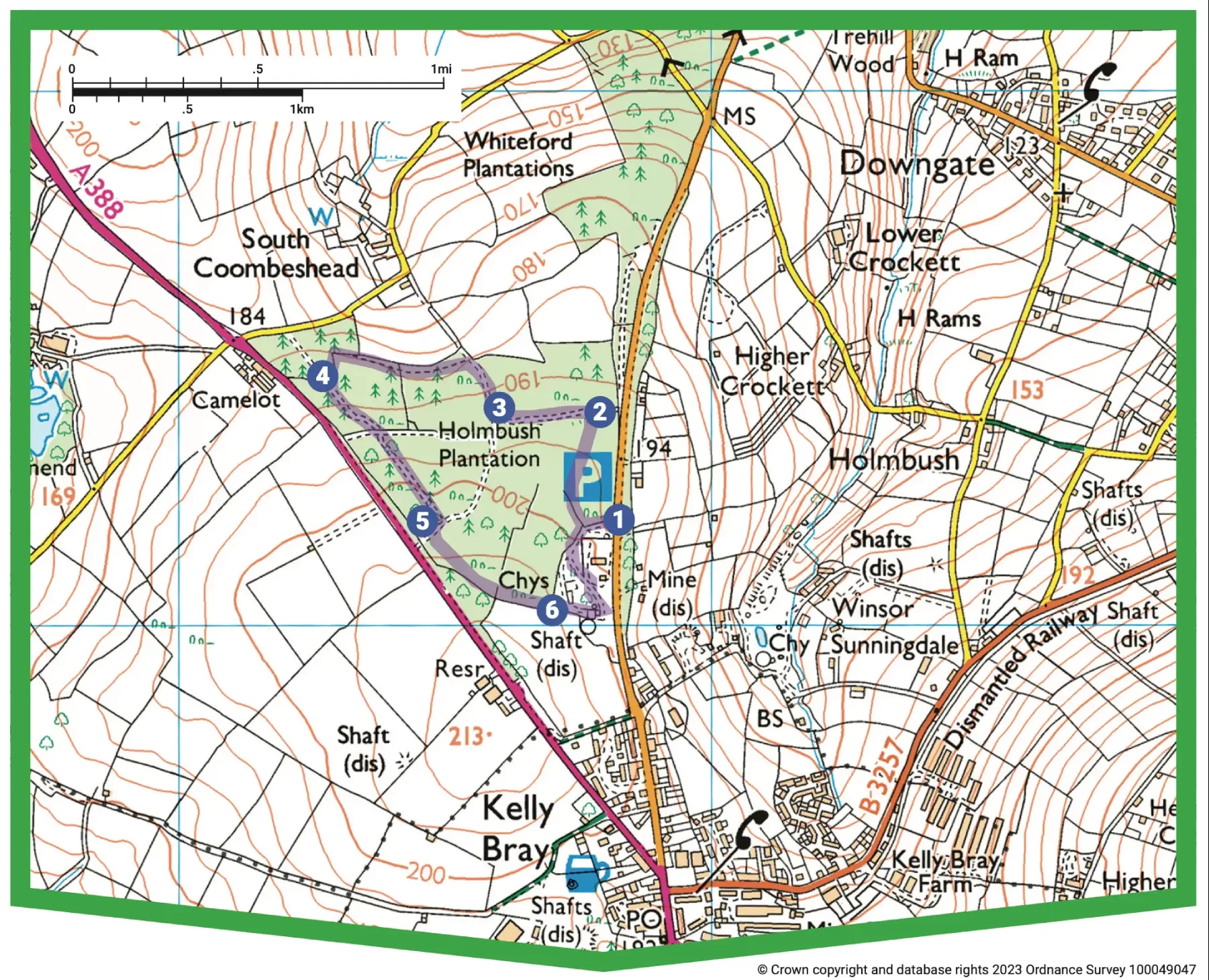Cross a bank by the chimney, then pass the engine house (a little path on the right winds into the interior of the building, accessed via a ladder).
Pick up and follow a narrow path that bears right and threads through the mining site, passing under and between remnants of hard-to-distinguish mine buildings: fenced-off shafts, water wheel and crank pits, a copper crushing house and spoil heaps.
Lead and silver were first mined here in the 17th century; copper ore was produced in the late 18th century and through much of the 19th century. Single specimens of silver lead ore and copper ore, each weighing 1–1½ tons, were exhibited by Holmbush Mine at the Great Exhibition of 1851. Between 1877 and 1886 Holmbush ranked alongside other well-known Tamar Valley mines as a prolific arsenic producer; mining ceased for good in 1923.
The output of the mine was impressive, particularly considering that prior to its establishment of this area was known as Kilbury, and simply a junction of moorland paths. The path winds on, passing a second chimney and the ivy-covered castle-like ruin of Hitchen’s pumping engine house.
Just past the engine house bear left at a junction on a narrow path, overgrown in summer, that leads back to the lower end of the broad beech avenue leading to the mine. Turn right for the car park.

